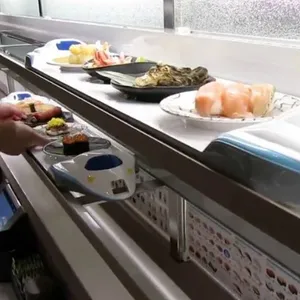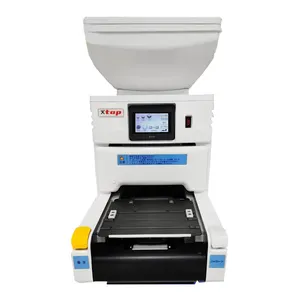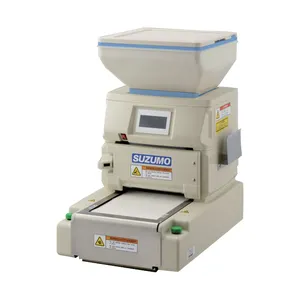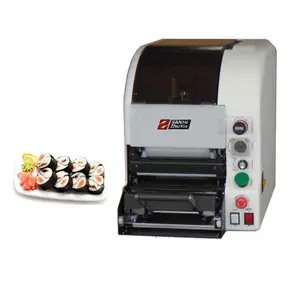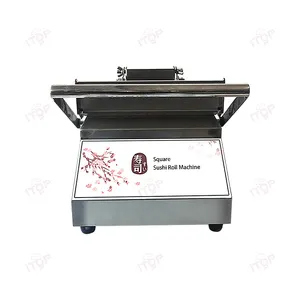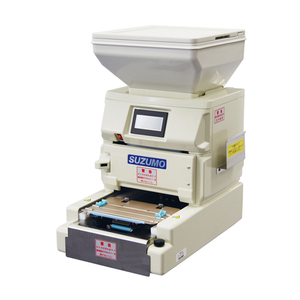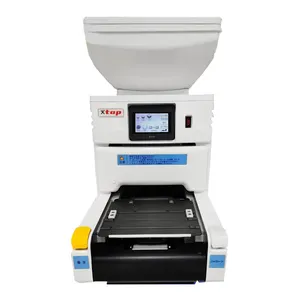Sushi Robotics





 1/3
1/3



 1/3
1/3



 1/3
1/3



 1/3
1/3


 1/1
1/1





 1/10
1/10





 1/18
1/18


 1/1
1/1





 1/9
1/9





 1/12
1/12


 1/1
1/1






 1/8
1/8

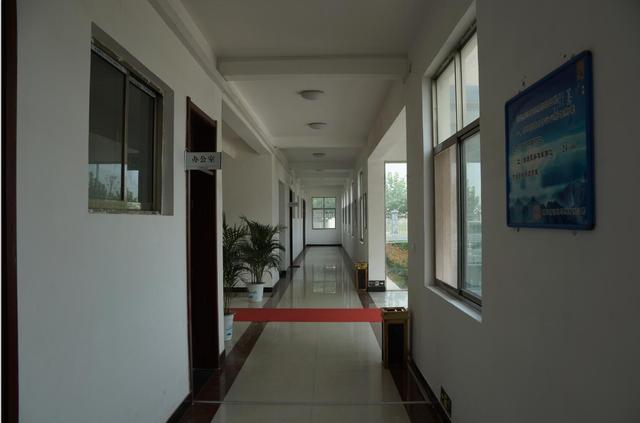

 1/3
1/3




 1/9
1/9





 1/3
1/3



 1/3
1/3





 1/21
1/21










 1/16
1/16
About sushi robotics
Where to Find Sushi Robotics Suppliers?
China is the central hub for sushi robotics manufacturing, with key production clusters in Guangdong, Henan, and Zhejiang provinces. These regions host specialized food machinery ecosystems that integrate R&D, precision engineering, and automated assembly lines. Guangdong, particularly Huizhou and Guangzhou, leads in compact, high-efficiency sushi forming and conveyor systems, leveraging proximity to stainless steel and servo motor suppliers. Henan’s Zhengzhou cluster focuses on cost-effective rice ball and nigiri machines, benefiting from regional automation component networks. Zhejiang's Hangzhou-based manufacturers specialize in premium commercial-grade sushi robots with advanced control systems.
The industrial concentration enables vertically integrated production—many suppliers manage design, machining, wiring, and testing in-house—reducing lead times and enabling rapid prototyping. Facilities typically maintain 1,000–5,000m² of production space with monthly outputs ranging from 50 to 300 units depending on complexity. Buyers benefit from localized supply chains that reduce material costs by 15–25% compared to non-Asian manufacturers, while supporting both bulk orders and customized configurations. Standard delivery windows range from 20–40 days after order confirmation.
How to Choose Sushi Robotics Suppliers?
Effective supplier selection requires structured evaluation across technical, operational, and transactional dimensions:
Technical Capability Verification
Confirm equipment specifications align with operational requirements: output capacity (units/hour), power source (AC/DC), control interface (PLC/touchscreen), and compatibility with ingredients (rice viscosity, nori thickness). For export markets, ensure CE or equivalent compliance for electrical safety and EMC standards. Request test reports for critical components such as drive motors, conveyor belts, and food-contact surfaces (e.g., SUS304 stainless steel certification).
Production Infrastructure Assessment
Evaluate manufacturer scale and process control through these indicators:
- Minimum factory area of 1,000m² for dedicated assembly lines
- In-house CNC machining and welding capabilities for core structural parts
- Dedicated quality inspection stations with pre-shipment testing protocols
Cross-reference online revenue metrics and on-time delivery rates—suppliers with ≥95% fulfillment reliability demonstrate stable operations. Response time under 4 hours indicates active order management.
Procurement Risk Mitigation
Utilize secure payment mechanisms such as escrow services until post-delivery acceptance. Prioritize suppliers offering sample units for performance validation. Assess customization depth: leading vendors support layout adjustments, belt width modifications, logo integration, and waterproofing upgrades. Verify warranty terms (typically 12 months) and availability of technical support for installation and troubleshooting.
What Are the Best Sushi Robotics Suppliers?
| Company Name | Location | Online Revenue | On-Time Delivery | Avg. Response | Reorder Rate | Customization Options | Min. Order Value | Product Range |
|---|---|---|---|---|---|---|---|---|
| Huizhou Aifeiyuan Technology Co., Ltd. | Guangdong, CN | US $500,000+ | 100% | ≤1h | 26% | Yes (layout, motor, color, size, belt design) | $5,000/set | Conveyor systems, rotary sushi platforms |
| Changsha Lvzhoushu Technology Co., Ltd. | Hunan, CN | US $60,000+ | 100% | ≤2h | 20% | Limited | $1,299/set | Nigiri, onigiri, norimaki machines |
| Guangzhou Shengtuo Food Machinery Co., Ltd. | Guangdong, CN | US $100,000+ | 100% | ≤1h | 15% | No | $530/set | Desktop onigiri, rice spreaders |
| Zhengzhou Aslan Machinery Co., Ltd. | Henan, CN | US $10,000+ | 80% | ≤7h | <15% | No | $540/set | Rice ball, triangle onigiri machines |
| Hangzhou Jiayi Kitchen Equipment Co., Ltd. | Zhejiang, CN | US $10,000+ | 100% | ≤4h | <15% | No | $1,500/set | High-end sushi robots, maki machines |
Performance Analysis
Huizhou Aifeiyuan stands out with the highest reorder rate (26%) and extensive customization capabilities, indicating strong buyer satisfaction and engineering flexibility. All top-performing suppliers maintain 100% on-time delivery, suggesting robust production planning. Guangdong-based manufacturers offer superior responsiveness (≤1h average reply time) and higher-end product designs. Changsha Lvzhoushu provides mid-range automation solutions at competitive pricing, suitable for small-to-mid volume operators. While Zhengzhou Aslan offers entry-level models, its 80% on-time delivery rate presents a potential fulfillment risk. Hangzhou Jiayi supplies premium sushi robots with price points exceeding $15,000, targeting high-volume commercial kitchens requiring full automation.
FAQs
How to verify sushi robotics supplier reliability?
Validate certifications (CE, ISO), request evidence of material sourcing (e.g., food-grade stainless steel), and review third-party transaction records. Analyze response consistency, delivery adherence, and customer feedback patterns. Video audits of production lines can confirm claimed capabilities.
What is the typical MOQ and pricing range?
Minimum order quantities vary: conveyor sections start at 10 meters ($200–300), standalone machines from 1 set ($530–$16,000), and full robotic systems from 1 unit ($5,000+). Bulk discounts apply above 5–10 units depending on model complexity.
Can suppliers customize sushi robotics equipment?
Yes, select manufacturers support modifications including belt width, motor type, control panel language, frame color, and waterproof enclosures. Full custom designs require technical drawings and may extend lead time by 10–20 days.
Do suppliers provide samples for testing?
Sample availability depends on model. Entry-level machines are often available as samples; high-value robotics may require partial payment for trial units. Expect sample lead times of 15–30 days, with return policies varying by vendor.
What are standard packaging and shipping options?
Machines are typically crated in seaworthy wooden cases with shock absorption. FOB terms are common; buyers arrange final transport. Air freight is viable for single units (7–14 days transit); sea shipping is economical for container loads (20–40 days).



